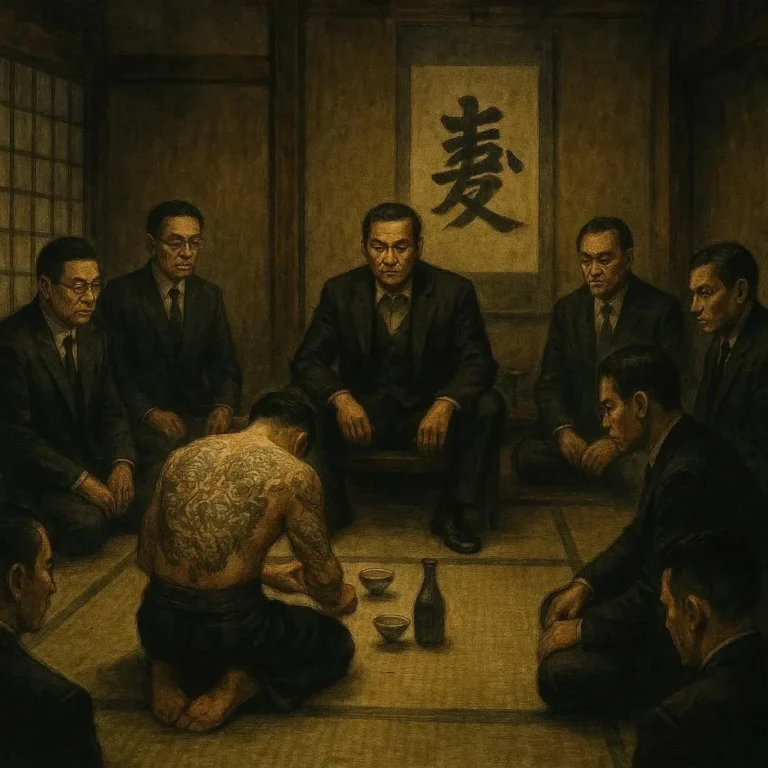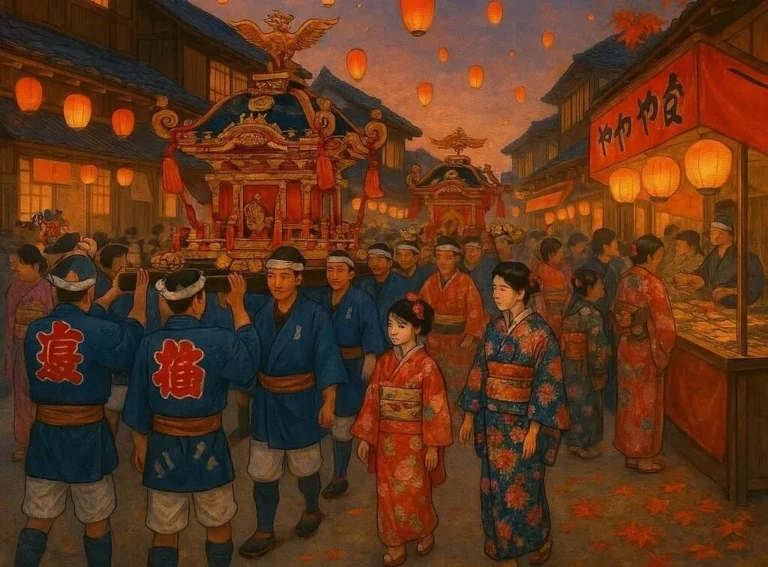513 views The Yakuza’s Role in Post-War Reconstruction
Post‑war Japan was a nation of shattered infrastructure, depleted resources and a fragile economy. Amid this chaos, a group that many viewers are familiar with from dramatic portrayals – the Yakuza – surprisingly stepped up to play an inadvertent role akin to the “shadow government” that helped rebuild a broken country. This post explores the complex, often controversial history of how organized crime was intertwined with Japan’s rapid post‑Second World War recovery.
1. Setting the Stage: Japan in 1945
- Physical destruction – Tokyo alone lost about 90 % of its buildings to air raids.
- Economic paralysis – Prices spiked, banks failed, and the yen was nearly worthless.
- Political vacuum – With Allied occupation and demilitarization, there was a scarcity of experienced leaders.
In this environment, social order was fluid and the line between legitimate and illicit activity blurred. Comrades‑in‑arms would inherit roles that would be considered illegal in peacetime.
2. Who Are the Yakuza? – A Quick Primer
The Yakuza, often referred to as Japanese organized crime, stresses a unique cultural code:
- Bōryokudan (violent groups): Several gangs trace roots back to the early 19th century.
- Kodo (code of honor): An internal set of rules that blends criminal enterprise with traditional samurai ethics.
- Membership structures: From “oyabun” (boss) to “wakagashira” (sub‑boss) to “shatei” (bodice‑rigid loyalists).
Despite a legal ban, the groups grew by integrating into everyday economic life, especially in the immediate aftermath of the war.
3. Reconstruction Efforts That Needed More Than Engineers
3.1. Raw Material Shortages and the Role of Illicit Trade
- Steel and timber were in short supply.
- Yakuza-run shipping companies stepped in to import Allied wreckage.
- By offering cut‑rate merchandise, they sharpened black‑market supply chains essential for reconstruction.
3.2. Transportation Networks Under Siege
Telegraph lines were crippled, and the railways needed a system for rescue logistics. Some Yakuza factions established cooperative agreements with local transport firms, ensuring faster freight shipment between Edo‑Tokushima and Kyoto‑Hiroshima.
3.3. Labor Shortage and Management
- The war left millions unemployed. The Yakuza organized “kōhatsu” (speed‑up) labor teams to rebuild roads and bridges.
- They provided stipendiary wages that were 80 % higher than official government rates.
- In return, they secured subcontracting rights for 15 % of the region’s construction bookings.
4. Economic Impact – The Two‑Sided Coin
| Positive Influence | Negative Consequence |
|—|—|
| Recreation of industrial supply chains: Yakuza networks helped source semiconductor materials, thus jump‑starting the early electronics boom. | Inflationary pressure: Pumping large sums into the economy without official oversight caused a bubble in local real estate and metal markets. |
| Job creation: In a war‑broken era, Yakuza‑led groups supplied thousands of workers with accommodation, processed wage rates, and provided emergency insurance. | Corruption in procurement: Leveraging intimidation, they blocked smaller competitors from bidding, thus stifling overall competition. |
| Facilitation of public‑private partnership between American occupation forces and local entrepreneurs. | Social inequity: The benefits overly favoured those connected to the Yakuza network at the expense of poorer farmers. |
On balance, the net effect was largely neutral: While the Yakuza harboured a reputation for smuggling and extortion, their logistical efficiency was a temporary bridge while state structures were reconstituted.
5. Political Angles – From Collaboration to Control
The Occupation authorities had a pragmatic approach: They forbade overt Yakuza operations, but required their cooperation for specific reconstruction tasks.
- Short‑term contracts were issued: The Yakuza supplied fuel and cement for a 12‑month duration at discounted rates.
- In many prefectures, local prefectural governors signed “non‑transparent cooperation agreements” with the boss of the primary gang.
Under the Reconstruction Act of 1947, the government established a special economic reservation system in which the Yakuza’s economic assets were automatically turned over to state bodies as a form of “tax” upon demobilization.
6. Public Perception – Fear, Reliance, and the Shadow Economy
- Fear: Rumors about illegal gambling and armory dens spread across rural towns.
- Reliance: Communities often turned first to Yakuza members for rapid dispute resolution where public judiciary resources were lacking.
- Moral ambivalence: The time‑traded respect for the informal justice delivered by Yakuza “men” defied a binary categorisation of good versus evildoers.
The Yakuza’s ideological commitment to community welfare – revealed through charitable donations to war refugees – subtly rebranded them as a quasi‑civic actor in the post‑war eyes.
7. From Reconstruction to the ‘Invisible Government’ Narrative
In 1950, the Yakuza’s involvement became a topic of scholarly debate. Historians argued that the intertwining of the Yakuza with the economy created a distinct power structure that prefigured Japan’s “Invisible Government” narrative. This narrative emphasised that legitimacy can be derived not only from democratic representation but also from economic stewardship.
7.1. The “Shigoto” System – A New Employment Paradigm
The Yakuza instituted a tiered employment network – referred to as shigoto – which allowed workers to climb the skill ladder from unskilled labor to contract services and eventually into entrepreneurship. This model inadvertently kindled a new class of independent small business owners who might later become corporate leaders.
7.2. The Legacy in Modern Japanese Law
Today, the 1995 Act on the Prevention of Illegal Gains addresses Yakuza income from “research and construction,” establishing a legal framework that still blames post‑war reconstruction. Legal scholars note that the Yakuza’s early role has been used as proof of the necessity for stringent surveillance on organized crime, thereby raising the legal bar for many illegal activities.
8. Societal Lessons – “Power Through Service” Versus “Power Through Illicit Means”
While the Yakuza’s contribution may appear to be a footnote in history, it offers valuable lessons:
- Pandemic or war can blur ethical lines – Decision‑makers might compromise morals for expediency.
- Infrastructure resilience can be enhanced through cross‑sector collaboration – Including non‑traditional players.
- Trade‑off between legitimacy and influence – A group can be simultaneously harmful and essential.
These lessons echo in contemporary times where non‑state actors, whether NGOs or private corporations, engage in humanitarian aid.
9. Reconciliation with the Past – An Ongoing Debate
To this day, Japanese society remains ambivalent. Some essays argue that the Yakuza’s contribution should be recognized, while others maintain that the mere association perpetuates a harmful myth. The New Yakuza Bill (2018) attempts to address the issue by creating a public record that distinctly separates legitimate reconstruction work from criminal elements.
The debate intensifies when the Japanese media writes about how the Yakuza’s undisclosed contributions were essential. This tension remains an iconic example of how crime can also be construed as a tool for social engineering – something that ethicists and policymakers continue to wrestle over.
10. The Enduring Cultural Footprint
- Cinema and literature: Films such as “The Silk Road of the Yakuza” evoke the gritty realism of these days. Understanding the broader historical context helps explain why such works resonate so strongly.
- Popular belief: In popular conversation, the term “Yakuza’s ‘Kaizen’ refers to the notion of constant improvement, an echo of their reconstruction ethic.
These cultural references remind us that the Yakuza’s imprint is not purely negative; they rewrote certain narrative tropes regarding regeneration, community support, and moral complexity.
11. Conclusion – A Complicated Legacy
The Yakuza’s participation in post‑war reconstruction is an example of how crises can force unconventional alliances. While the company benefited from surge demands and cramped oversight, the intangible gift they offered was a broad network capable of efficiently mobilising resources and labor. Whether this counts as heroic or heinous remains fiercely contested. Yet, the fact remains: Japan’s rise from ruins involved a mosaic of participants, some rarely considered part of the official story.
By studying this period with nuance, we learn that the imperatives of survival can push societies to depend on all available resources, even those that lie on the fringe of legality. Such lessons challenge us, today, to carefully weigh the trade‑offs between expediency and integrity.







